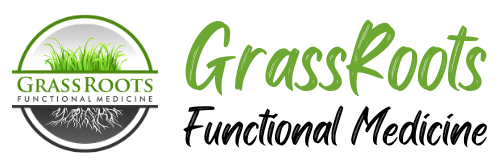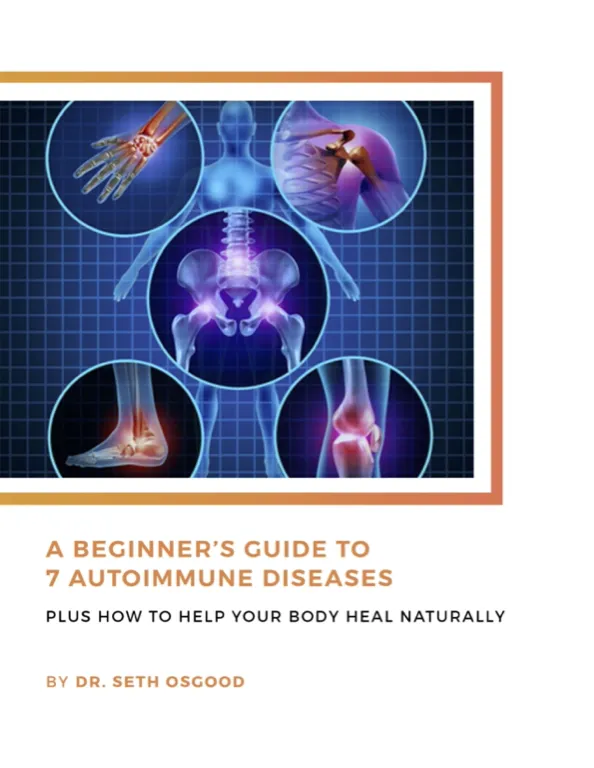This may come as a shock, but there isn’t one perfect diet or way to eat. What works for one person won’t always work for another (even if they share the same diagnosis!) because we each have our own biochemistry, microbiome, and immune status.
With a functional medicine approach, our goal is to find the foods that work best for your body. That involves identifying your personal food sensitivities (and overcoming them if possible) to create a diet optimized for your individual needs.
Let’s look at why that’s so important and how to do it!
What is a Food Sensitivity?
A food sensitivity is a delayed immune response (typically IgA or IgG-mediated) to a food. Unlike a food allergy, which is IgE-mediated and presents immediately, food sensitivities may appear up to 72 hours after exposure and cause mild and seemingly unrelated symptoms.
If you have a sensitivity to gluten for example, you may eat a bagel for breakfast on Monday and experience joint pain on Tuesday afternoon.
These reactions can make you feel crummy, but they also keep your inflammation levels elevated and contribute to leaky gut, both of which increase your risk for chronic disease. Until you remove your trigger foods, you’re adding fuel to the fire each time you eat them.
Signs & Symptoms of a Food Sensitivity
Despite what you may have heard, food sensitivities do NOT always present as digestive issues. In fact, one of the trickiest aspects of food sensitivities is that the symptoms can be so broad.
Signs of a food sensitivity can include:
- Brain fog
- Fatigue
- Headaches
- Joint pain
- Acne
- Eczema
- Dry, itchy skin
- Bloating, gas, abdominal pain
- Reflux or heartburn
- Fatigue
- Congestion or runny nose
- Moodiness, anxiety, depression
- Chronic ear infections (in children)
- ADD and ADHD
What are the Most Common Trigger Foods?
You can have a sensitivity to any food, even “healthy” whole foods, such as apples or avocado. However, there are certain foods that are more likely to be inflammatory and therefore trigger a sensitivity.
Common food sensitivities I see are:
- Gluten
- Dairy
- Soy
- Nightshades – tomatoes, potatoes, peppers, eggplant
- Eggs
- Grains – with or without gluten
- Legumes
How to Test for a Food Sensitivity
If you’ve noticed any of the symptoms I listed above and believe they may be caused by a food sensitivity, you have two options to pinpoint your trigger foods.
1. Elimination Diet
This is the gold standard and my first recommendation to all of my patients because it lets you see exactly how your body responds to specific foods.
Start by eliminating the common trigger foods I listed above for a period of 30 days. This provides enough time for the foods to exit your system and your inflammation levels to calm down to baseline.
Then, reintroduce each food one at a time to gauge your reaction. Eat each test food three times on day one and wait two days to see if you observe any symptoms. If you have a negative reaction, stop that food immediately, put it on your “avoid” list, and wait for your symptoms to resolve before introducing the next food. If you go all three days without any negative reactions you can add that food to your “yes” list.
2. At-Home Food Sensitivity Test
For a more comprehensive look, many of my patients find food sensitivity testing enlightening and helpful. It measures immune reactivity for a much larger group of foods than an elimination diet and is a great option for children and those who want as much information as possible to feel better quickly.
The test we use in my clinic (and offer online) is the Great Plains Laboratory Food Map test. I have found it to be the most accurate and comprehensive because it looks at 190 different foods and gauges your reactivity on a 4-point scale.
Here’s a look at how the test works and what it tells you:
Can You Get Rid of A Food Sensitivity?
This is a very important question that doesn’t get talked about very often, so pay close attention to this…
The goal is not to live on a highly restrictive diet forever!
Diversity is incredibly important for your microbiome and ensuring a wide range of antioxidants, minerals, and micronutrients.
I sometimes see patients who have completed food sensitivity testing or an elimination diet and are surviving on a tiny list of “safe” foods. Sadly, they have often become malnourished or have a depleted microbiome as a result.
If you are reacting to dozens of different foods, that is a red flag that something else is going on that is revving up your inflammation and decreasing your tolerance. The long-term goal should be to identify that underlying cause and treat it so that you can add back as many foods as possible.
At-Home Food Sensitivity Test with a Private Nutrition Consult
If you’re ready to get your food sensitivities under control and eat with confidence, we now offer at-home food sensitivity testing with a 60-minute nutrition consult!
You’ll gain clarity on what foods to avoid, red flags to investigate, and how to decrease inflammation and lower your risk for chronic disease.
About the Author: Dr. Seth Osgood is a Doctor of Nursing Practice, Board Certified Family Nurse Practitioner and Institute of Functional Medicine (IFM) Certified Practitioner. Dr. Osgood received his post-graduate training in Functional Medicine through the IFM and from working with Dr. Amy Myers. He has helped people from around the world improve their health utilizing a Functional Medicine approach.
Want to work with Dr. Osgood and the GrassRoots team? Become a patient in our West Lebanon, New Hampshire Functional Medicine clinic, our Burlington, Vermont Functional Medicine clinic, or our Austin, Texas Functional Medicine clinic!





